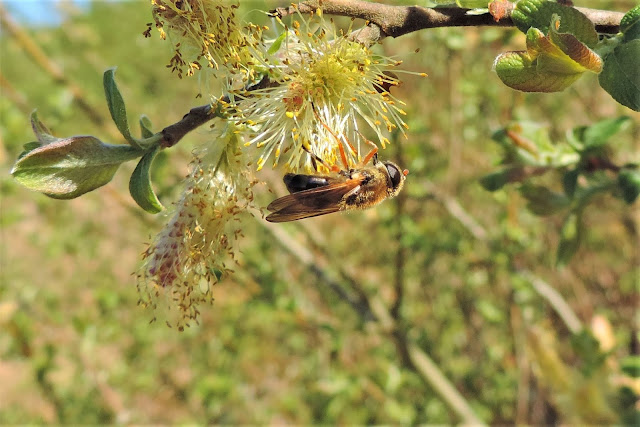My "3 week lockdown" is well and truly over. Called back into work, as the company is making ceiling tiles for the new temporary Nightingale hospitals. In fact I've just worked a 70 hour week and will be doing the same next week.
I stopped off at top Llan on the way home to get a bit of fresh air and stretch my legs. The beech woods were particularly lively with insects today, most of which were firsts for the year. On the hoverfly front I had my first
Melangyna cincta (👍), a female laying eggs on the underside of beech twigs. Not new for the valley as Paul Tabor had a couple in 2018. New for the year besides the cincta were
Cheilosia albitarsis, Sericomyia silentis and Xylota jakutorum. 9 species seen overall with Platycheirus albimanus being the most numerous (20).
Birds were very numerous in the April sunshine and included Red Kite (1), Blackcap (6), Willow Warbler(10), Chiffchaff (4), Whitethroat (2), Tree Pipit (1), Lesser Redpoll (2 pairs), Goldfinch (3 pairs) and Siskin (1 pair).
Notable sightings included Adela reaumurella, Micropteryx calthella, Drinker moth caterpillar (moths). Rhagium bifasciatum, Poecilus cupreus, Green Tiger Beetle (beetles). Dock Bug, Hairy Shieldbug and Red and Black Groundhopper. Plus galls on Oak of the gall wasp Andricus curvator.
Adela reaumurella - 100+ dancing on Beech leaves 5 feet off the ground
Oak galls of the wasp
Andricus curvator
Dock Bug
Hairy Shieldbug
Parasyrphus punctulatus (4) perching on a beech tree foilage awaiting approaching females.
Poecilus cupreus ground Beetle
Rhagium bifasciatum longhorn beetle





























